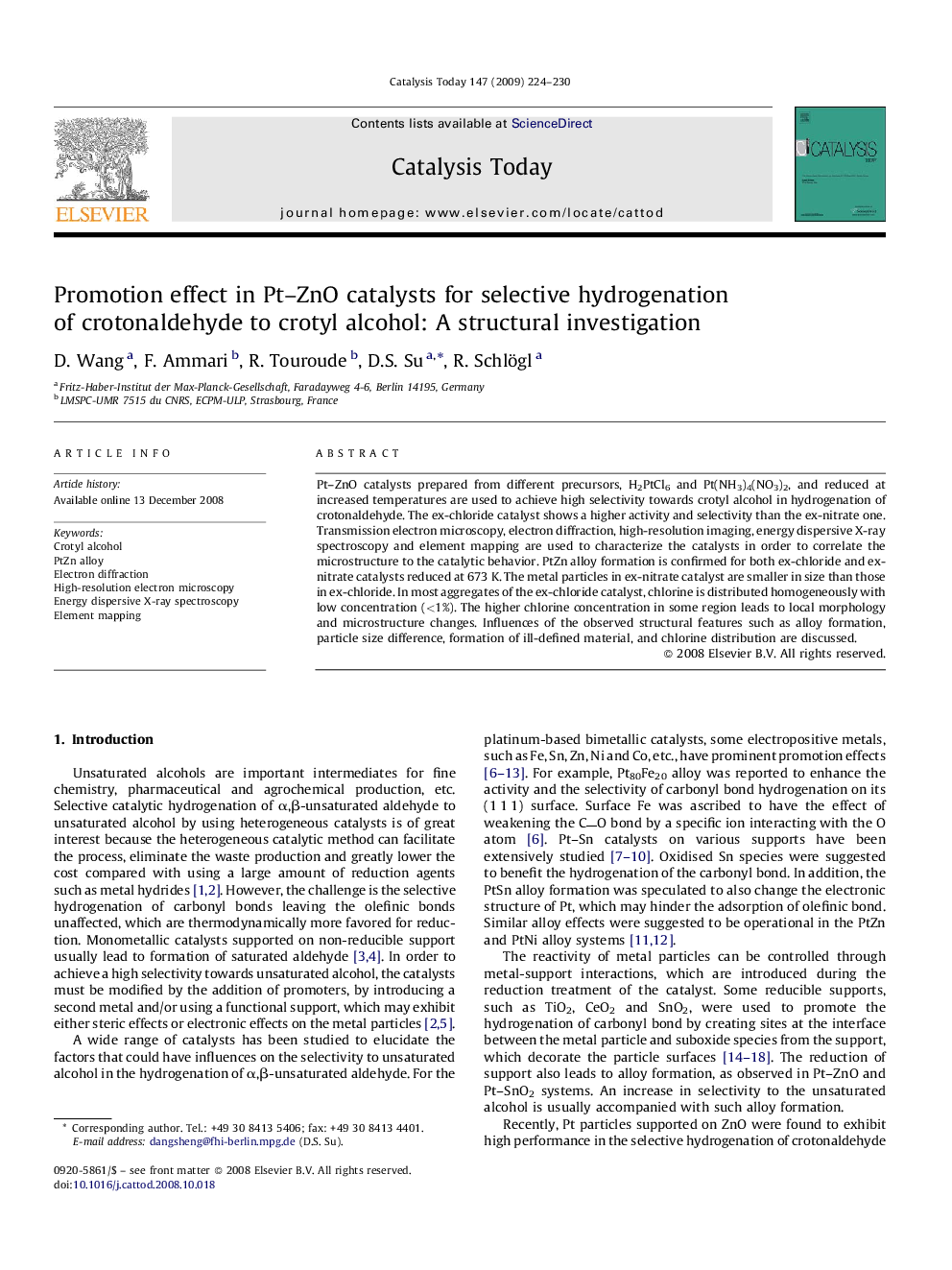| Article ID | Journal | Published Year | Pages | File Type |
|---|---|---|---|---|
| 56869 | Catalysis Today | 2009 | 7 Pages |
Pt–ZnO catalysts prepared from different precursors, H2PtCl6 and Pt(NH3)4(NO3)2, and reduced at increased temperatures are used to achieve high selectivity towards crotyl alcohol in hydrogenation of crotonaldehyde. The ex-chloride catalyst shows a higher activity and selectivity than the ex-nitrate one. Transmission electron microscopy, electron diffraction, high-resolution imaging, energy dispersive X-ray spectroscopy and element mapping are used to characterize the catalysts in order to correlate the microstructure to the catalytic behavior. PtZn alloy formation is confirmed for both ex-chloride and ex-nitrate catalysts reduced at 673 K. The metal particles in ex-nitrate catalyst are smaller in size than those in ex-chloride. In most aggregates of the ex-chloride catalyst, chlorine is distributed homogeneously with low concentration (<1%). The higher chlorine concentration in some region leads to local morphology and microstructure changes. Influences of the observed structural features such as alloy formation, particle size difference, formation of ill-defined material, and chlorine distribution are discussed.
